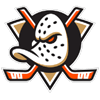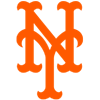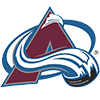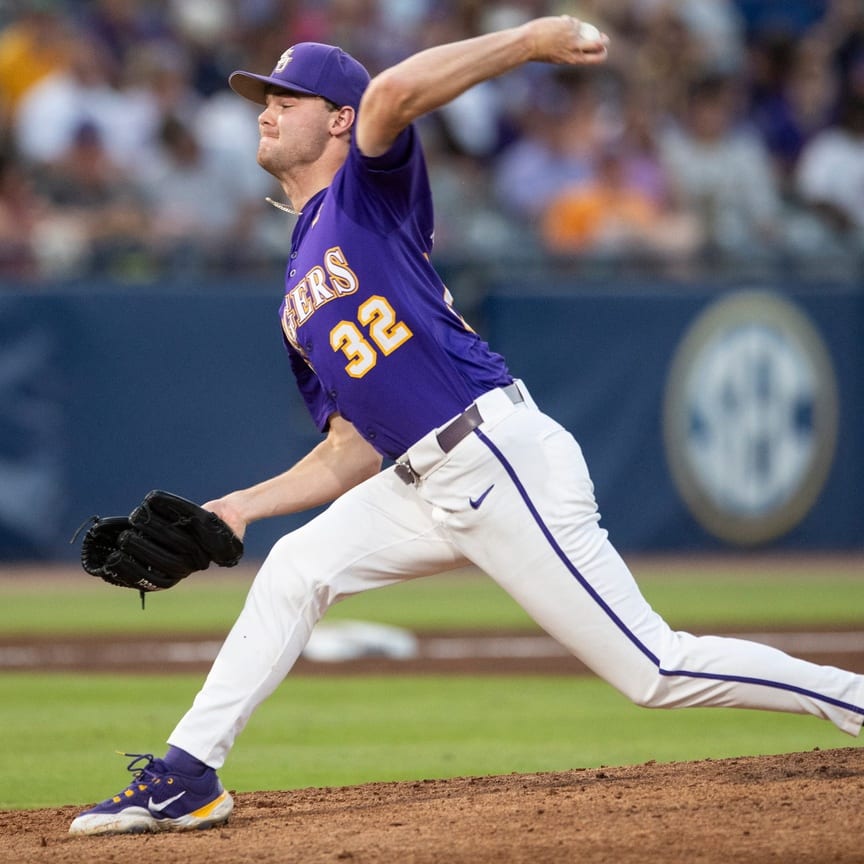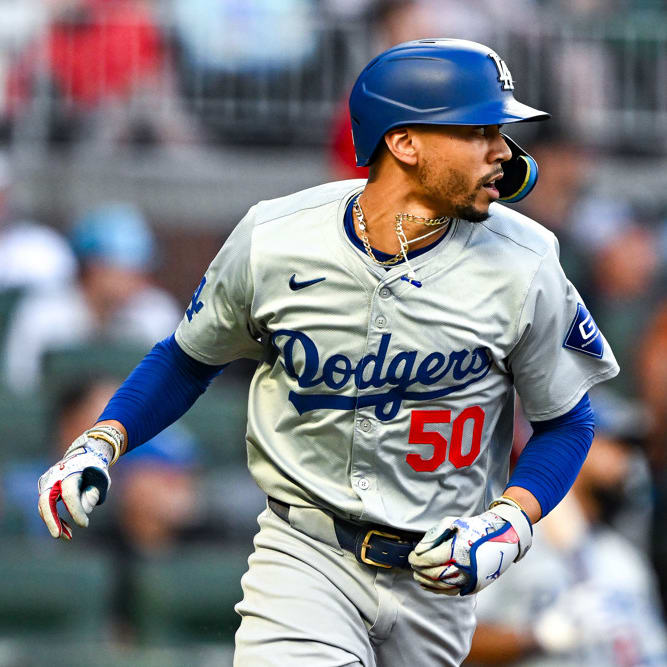Open any fantasy article this time of year and you'll see some variation of the following sentiment: "It's still early, and we don't want to overreact to small-sample stats, but there are still some early trends worth paying attention to." That's not a knock on any other writer, as I bet you could find a version of that sentence in the introductory paragraphs of at least 80 percent of the articles I write in any given April.
Since this is now my fifth season writing the MLB Barometer, I have a bit of data to use for some self-evaluation. How likely is it that the players who are doing noteworthy things at this point of the year are genuinely showing new levels of talent? How often are we — or, in this case, I — fooled by something which turned out to be no more than a three-week hot streak?
To collect the data for the table below, I pulled out every player who I wrote up in my third regular-season barometer of the year in each of the last four seasons (2019, 2020, 2021 and 2022). I then compared each player's year-end wRC+ or ERA+ (to account for park changes) in the year they were featured to their numbers from the previous season. "Hits" for the purposes of this chart are players who were listed as risers (or fallers) and did indeed go on to finish the year with a better (or worse) wRC+ or
Open any fantasy article this time of year and you'll see some variation of the following sentiment: "It's still early, and we don't want to overreact to small-sample stats, but there are still some early trends worth paying attention to." That's not a knock on any other writer, as I bet you could find a version of that sentence in the introductory paragraphs of at least 80 percent of the articles I write in any given April.
Since this is now my fifth season writing the MLB Barometer, I have a bit of data to use for some self-evaluation. How likely is it that the players who are doing noteworthy things at this point of the year are genuinely showing new levels of talent? How often are we — or, in this case, I — fooled by something which turned out to be no more than a three-week hot streak?
To collect the data for the table below, I pulled out every player who I wrote up in my third regular-season barometer of the year in each of the last four seasons (2019, 2020, 2021 and 2022). I then compared each player's year-end wRC+ or ERA+ (to account for park changes) in the year they were featured to their numbers from the previous season. "Hits" for the purposes of this chart are players who were listed as risers (or fallers) and did indeed go on to finish the year with a better (or worse) wRC+ or ERA+. Note that I've excluded 2021 riser Jed Lowrie and 2022 faller Oneil Cruz, as they didn't appear in the majors the previous season and have no data to compare to.
| Group | Number | wRC+ / ERA+ | wRC+ / ERA+ | Change | Hits | Hit Rate |
|---|---|---|---|---|---|---|
| Rising Hitters | 13 | 105.8 | 120.2 | +14.4 | 9 | 69.2% |
| Rising Pitchers | 10 | 112.5 | 144.4 | +31.9 | 7 | 70.0% |
| Falling Hitters | 7 | 125.3 | 98.7 | -26.6 | 5 | 71.4% |
| Falling Pitchers | 9 | 101.0 | 75.2 | -25.8 | 9 | 100.0% |
It's an unscientific study of one column by one writer, but the results are encouraging nonetheless, and not just for my continued employment. It seems safe to say that if a player has caught the eye enough already that he's being featured in articles and being discussed in podcasts, odds are there's something there. There will be misses, no doubt, with the numbers above indicating that two or three players featured below will probably reverse course by the end of the year, but for the most part, we can already have a good sense as to the direction players are moving, if not the magnitude.
RISERS
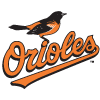 Adley Rutschman, C, Orioles: It shouldn't surprise us that Rutschman is off to a strong start in his sophomore season. He was accompanied by glowing reports of both his talent and his character as a rookie last season and delivered to the tune of a 133 wRC+ and 5.3 fWAR. That led to him finishing the spring as the fifth-highest catcher off the board. What he's shown so far this season, however, suggests he may still have been underrated. He's yet to sit once (DHing all four times he didn't start behind the plate) and is slashing .344/.481/.574. He's cleared the fence four times and is walking 20.8 percent of the time to go with an 11.7 percent strikeout rate. Given his pedigree, would it really be a shock if he established himself as the clear best catcher in baseball this season? He's always had that kind of potential, and it doesn't look as though he has much development left to do before he gets there.
Adley Rutschman, C, Orioles: It shouldn't surprise us that Rutschman is off to a strong start in his sophomore season. He was accompanied by glowing reports of both his talent and his character as a rookie last season and delivered to the tune of a 133 wRC+ and 5.3 fWAR. That led to him finishing the spring as the fifth-highest catcher off the board. What he's shown so far this season, however, suggests he may still have been underrated. He's yet to sit once (DHing all four times he didn't start behind the plate) and is slashing .344/.481/.574. He's cleared the fence four times and is walking 20.8 percent of the time to go with an 11.7 percent strikeout rate. Given his pedigree, would it really be a shock if he established himself as the clear best catcher in baseball this season? He's always had that kind of potential, and it doesn't look as though he has much development left to do before he gets there.
 Matt Chapman, 3B, Blue Jays: No hitter is off to a better start than Chapman, whose 238 wRC+ (the product of a .410/.471/.738 slash line) leads all qualified hitters. A .500 BABIP has undoubtedly helped him, but one way to run a high BABIP is by making excellent contact, and Chapman has certainly done that. Through 16 games, his barrel rate sits at 32.6 percent and his hard-hit rate sits at 69.6 percent, both of which easily lead all qualified hitters. Chapman's .377 xBA suggests he's only getting a bit lucky, while his .822 xSLG argues that may even be getting unlucky. Quality contact is nothing new for Chapman (albeit not to this level), but the fact that it's being paired with a 22.1 percent strikeout rate is very encouraging. Chapman struck out over 30 percent of the time from 2020 to 2022, but he managed a 21.9 percent strikeout rate in 2019, the year he hit a career-high 36 homers. He could be in line for a similar total this season if he keeps making this much contact.
Matt Chapman, 3B, Blue Jays: No hitter is off to a better start than Chapman, whose 238 wRC+ (the product of a .410/.471/.738 slash line) leads all qualified hitters. A .500 BABIP has undoubtedly helped him, but one way to run a high BABIP is by making excellent contact, and Chapman has certainly done that. Through 16 games, his barrel rate sits at 32.6 percent and his hard-hit rate sits at 69.6 percent, both of which easily lead all qualified hitters. Chapman's .377 xBA suggests he's only getting a bit lucky, while his .822 xSLG argues that may even be getting unlucky. Quality contact is nothing new for Chapman (albeit not to this level), but the fact that it's being paired with a 22.1 percent strikeout rate is very encouraging. Chapman struck out over 30 percent of the time from 2020 to 2022, but he managed a 21.9 percent strikeout rate in 2019, the year he hit a career-high 36 homers. He could be in line for a similar total this season if he keeps making this much contact.
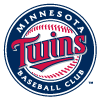 Joe Ryan, SP, Twins: After cruising past the Royals in his first start of the season, Ryan came face-to-face with the class of the American League, taking on the Astros in his second turn and the Yankees in his third. He struck out 10 batters in both outings while allowing just three hits in each and a combined one walk. Yordan Alvarez did manage a grand slam off him in the first of those two games, but it was nonetheless an excellent pair of outings overall. Homer troubles will likely be part of the picture for Ryan throughout his career, as his 27.5 percent groundball rate is a near match for his 27.7 percent mark from last year, but he's done more than enough to outweigh them so far this year. His 37.1 percent strikeout rate trails only Jacob deGrom among qualified starters, and he's paired that mark with a 4.3 percent walk rate. Those numbers become meaningful quickly, and they're all the more meaningful considering the quality of competition he's faced.
Joe Ryan, SP, Twins: After cruising past the Royals in his first start of the season, Ryan came face-to-face with the class of the American League, taking on the Astros in his second turn and the Yankees in his third. He struck out 10 batters in both outings while allowing just three hits in each and a combined one walk. Yordan Alvarez did manage a grand slam off him in the first of those two games, but it was nonetheless an excellent pair of outings overall. Homer troubles will likely be part of the picture for Ryan throughout his career, as his 27.5 percent groundball rate is a near match for his 27.7 percent mark from last year, but he's done more than enough to outweigh them so far this year. His 37.1 percent strikeout rate trails only Jacob deGrom among qualified starters, and he's paired that mark with a 4.3 percent walk rate. Those numbers become meaningful quickly, and they're all the more meaningful considering the quality of competition he's faced.
 Nick Lodolo, SP, Reds: It's only been three starts, but Lodolo is already doing everything he can to make those who were nervous about drafting him due to his tough home park look foolish. After two outings in Cincinnati and one more in Philadelphia, he owns a 2.12 ERA, backing it up with a 1.97 FIP and 2.33 xFIP. The young lefty showed promise last season by combining a roughly average walk rate (8.8 percent) with a strong strikeout rate (29.7 percent) and groundball rate (46.0 percent). All three marks are trending in the right direction this year, with his walk rate (8.0 percent) and groundball rate (48.8 percent) improving slightly, while his strikeout rate jumps to 36.0 percent, trailing only deGrom and the aforementioned Ryan among qualified starters. Oddly, his strong start has come with a 1.41 WHIP, but that seems entirely due to a .415 BABIP. Lodolo is already getting whiffs and preventing walks and hard contact, so when the singles stop finding holes, he could get even scarier.
Nick Lodolo, SP, Reds: It's only been three starts, but Lodolo is already doing everything he can to make those who were nervous about drafting him due to his tough home park look foolish. After two outings in Cincinnati and one more in Philadelphia, he owns a 2.12 ERA, backing it up with a 1.97 FIP and 2.33 xFIP. The young lefty showed promise last season by combining a roughly average walk rate (8.8 percent) with a strong strikeout rate (29.7 percent) and groundball rate (46.0 percent). All three marks are trending in the right direction this year, with his walk rate (8.0 percent) and groundball rate (48.8 percent) improving slightly, while his strikeout rate jumps to 36.0 percent, trailing only deGrom and the aforementioned Ryan among qualified starters. Oddly, his strong start has come with a 1.41 WHIP, but that seems entirely due to a .415 BABIP. Lodolo is already getting whiffs and preventing walks and hard contact, so when the singles stop finding holes, he could get even scarier.
 Vaughn Grissom, 2B, Atlanta: Grissom was deemed not yet ready to take over as Atlanta's shortstop when the season began, with the organization sending him down to work on his defense despite the fact that he hit .291/.353/.440 in 41 games as a rookie. It's doubtful that he leveled his defense up significantly during his 10 games for Triple-A Gwinnett, but he's back in the big leagues nonetheless after Orlando Arcia was hit in the wrist by a pitch and suffered a microfracture. The team's previous treatment of Grissom means he's not necessarily locked into a roster spot once Arcia returns, but he's gotten off to a good start as far as staking his claim to a permanent spot, grabbing five hits in his first four games while striking out just once. He's also already committed an error, and his DRS, UZR and OAA are all already negative. Given that he also graded out as a negative defender at second base last season, we shouldn't dismiss the team's doubts that he might not be cut out for shortstop, but with Atlanta getting a collective 42 wRC+ at left field and a 53 wRC+ at DH, it shouldn't be too hard to fit his bat in somewhere.
Vaughn Grissom, 2B, Atlanta: Grissom was deemed not yet ready to take over as Atlanta's shortstop when the season began, with the organization sending him down to work on his defense despite the fact that he hit .291/.353/.440 in 41 games as a rookie. It's doubtful that he leveled his defense up significantly during his 10 games for Triple-A Gwinnett, but he's back in the big leagues nonetheless after Orlando Arcia was hit in the wrist by a pitch and suffered a microfracture. The team's previous treatment of Grissom means he's not necessarily locked into a roster spot once Arcia returns, but he's gotten off to a good start as far as staking his claim to a permanent spot, grabbing five hits in his first four games while striking out just once. He's also already committed an error, and his DRS, UZR and OAA are all already negative. Given that he also graded out as a negative defender at second base last season, we shouldn't dismiss the team's doubts that he might not be cut out for shortstop, but with Atlanta getting a collective 42 wRC+ at left field and a 53 wRC+ at DH, it shouldn't be too hard to fit his bat in somewhere.
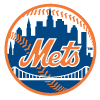 Brett Baty, 3B, Mets: Baty made his big-league debut last year, but didn't show much in 11 games, hitting .184/.244/.342. He failed to break camp in the majors despite his .885 OPS in spring training, but he didn't have to wait long for his chance. The Mets have already tired of Eduardo Escobar, who started the year hitting .125/.173/.229 through 14 games, so Baty got the call Monday and should be here for good if he hits. He was certainly hitting in the minors, homering five times in nine games while posting a .400 average. The 2019 12th-overall pick is a power-over-hit prospect, though his career 25.7 percent strikeout rate in the minors wasn't dangerously high. He'll need to prevent that mark from ticking up too high in the big leagues and will also need to make sure he doesn't pound the ball into the ground too much, as that's capped his power production in the past. If he does those things, he could settle in as the Mets' everyday third baseman for a long time.
Brett Baty, 3B, Mets: Baty made his big-league debut last year, but didn't show much in 11 games, hitting .184/.244/.342. He failed to break camp in the majors despite his .885 OPS in spring training, but he didn't have to wait long for his chance. The Mets have already tired of Eduardo Escobar, who started the year hitting .125/.173/.229 through 14 games, so Baty got the call Monday and should be here for good if he hits. He was certainly hitting in the minors, homering five times in nine games while posting a .400 average. The 2019 12th-overall pick is a power-over-hit prospect, though his career 25.7 percent strikeout rate in the minors wasn't dangerously high. He'll need to prevent that mark from ticking up too high in the big leagues and will also need to make sure he doesn't pound the ball into the ground too much, as that's capped his power production in the past. If he does those things, he could settle in as the Mets' everyday third baseman for a long time.
FALLERS
 Alek Manoah, SP, Blue Jays: Manoah finished fourth among qualified starters last season with a 2.24 ERA, but the ERA estimators (particularly his 3.97 xFIP) told a very different story. Many drafters were unfazed by that large gap, as Manoah finished draft season with an NFBC ADP of 68 and was the 20th starting pitcher off the board. Even those who avoided him expecting some heavy regression wouldn't have predicted just how poorly he'd start the season, however. After getting rocked by the Rays for seven runs in 4.2 frames on Sunday, he now owns a 6.98 ERA and 1.97 WHIP through his first four starts. Some of his struggles are due to the evaporation of what seemed to be good luck last season; his BABIP has jumped from .244 to .317, while his HR/FB rate has jumped from 7.1 percent to 14.8 percent. Far more worrisome, however, is his very poor combination of a 16.5 percent strikeout rate and 15.5 percent walk rate. The 25-year-old righty still has plenty of time to rescue himself from his tailspin, but it's hard to trust him this weekend at Yankee Stadium.
Alek Manoah, SP, Blue Jays: Manoah finished fourth among qualified starters last season with a 2.24 ERA, but the ERA estimators (particularly his 3.97 xFIP) told a very different story. Many drafters were unfazed by that large gap, as Manoah finished draft season with an NFBC ADP of 68 and was the 20th starting pitcher off the board. Even those who avoided him expecting some heavy regression wouldn't have predicted just how poorly he'd start the season, however. After getting rocked by the Rays for seven runs in 4.2 frames on Sunday, he now owns a 6.98 ERA and 1.97 WHIP through his first four starts. Some of his struggles are due to the evaporation of what seemed to be good luck last season; his BABIP has jumped from .244 to .317, while his HR/FB rate has jumped from 7.1 percent to 14.8 percent. Far more worrisome, however, is his very poor combination of a 16.5 percent strikeout rate and 15.5 percent walk rate. The 25-year-old righty still has plenty of time to rescue himself from his tailspin, but it's hard to trust him this weekend at Yankee Stadium.
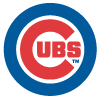 Trey Mancini, 1B/OF, Cubs: Outside of the shortened 2020 season, which he missed while battling colon cancer, Mancini has been remarkably consistent. The output has varied slightly, but he's produced a strikeout rate between 21.1 and 24.1 percent for five consecutive seasons while recording a barrel rate between 9.3 and 10.6 percent. Even with a downturn following his midseason move to Houston last year, Mancini still looked like a steady veteran who the Cubs were happy to give two years and a modest $14 million to this winter. The results, however, could hardly be worse so far. Through 14 games, Mancini has homered just once while slashing .196/.220/.250, and his -0.7 fWAR is the worst mark in the league. Just about everything under the hood looks off. His strikeout rate has spiked to 30.0 percent, and he's walked just once, giving him a 1.7 percent walk rate. When he does hit the ball, he's managed a 2.5 percent barrel rate. The 31-year-old has plenty of time to pull himself out of his slump, but it's about as poor of a start as he and the Cubs could hope for.
Trey Mancini, 1B/OF, Cubs: Outside of the shortened 2020 season, which he missed while battling colon cancer, Mancini has been remarkably consistent. The output has varied slightly, but he's produced a strikeout rate between 21.1 and 24.1 percent for five consecutive seasons while recording a barrel rate between 9.3 and 10.6 percent. Even with a downturn following his midseason move to Houston last year, Mancini still looked like a steady veteran who the Cubs were happy to give two years and a modest $14 million to this winter. The results, however, could hardly be worse so far. Through 14 games, Mancini has homered just once while slashing .196/.220/.250, and his -0.7 fWAR is the worst mark in the league. Just about everything under the hood looks off. His strikeout rate has spiked to 30.0 percent, and he's walked just once, giving him a 1.7 percent walk rate. When he does hit the ball, he's managed a 2.5 percent barrel rate. The 31-year-old has plenty of time to pull himself out of his slump, but it's about as poor of a start as he and the Cubs could hope for.
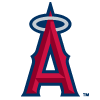 Brandon Drury, 1B/2B/3B, Angels: Drury was one of the stories of the season last year, breaking out as a 30-year-old to hit .263/.320/.492 with 28 homers following seven seasons full of injuries and disappointing performances. Most of his success came in the first half, however, as his wRC+ was 131 with the Reds but slipped to 105 after a move to the Padres at the deadline. The Angels brought him in on a two-year deal in December, but so far, his slide has continued. Through 14 games, he's hitting just .204/.241/.327 with one home run. The biggest concern is the sudden evaporation of his plate discipline, as he's striking out 29.6 percent of the time to go with a 3.7 percent walk rate. Last year, his chase rate (32.4 percent) was right around league average, and he made contact 70.4 percent of the time he expanded the zone. This year, his chase rate has spiked to 43.6 percent, and he's making contact just 54.5 percent of the time on those swings.
Brandon Drury, 1B/2B/3B, Angels: Drury was one of the stories of the season last year, breaking out as a 30-year-old to hit .263/.320/.492 with 28 homers following seven seasons full of injuries and disappointing performances. Most of his success came in the first half, however, as his wRC+ was 131 with the Reds but slipped to 105 after a move to the Padres at the deadline. The Angels brought him in on a two-year deal in December, but so far, his slide has continued. Through 14 games, he's hitting just .204/.241/.327 with one home run. The biggest concern is the sudden evaporation of his plate discipline, as he's striking out 29.6 percent of the time to go with a 3.7 percent walk rate. Last year, his chase rate (32.4 percent) was right around league average, and he made contact 70.4 percent of the time he expanded the zone. This year, his chase rate has spiked to 43.6 percent, and he's making contact just 54.5 percent of the time on those swings.
 Triston Casas, 1B, Red Sox: Casas didn't make the greatest first impression in 27 games as a rookie last year, though his .197/.358/.408 slash line was actually good for a strong 120 wRC+. He homered just twice and recorded a 56.6 percent groundball rate, but a 20.0 percent walk rate kept him valuable enough and provided reason for optimism this season if he could convert that great eye into more production when he chose to swing. The early results this year are discouraging. His walk rate has fallen to a league-average 9.3 percent, while his strikeout rate has jumped from 24.2 percent to 29.6 percent. He's hitting the ball in the air far more, with his groundball rate collapsing to 27.3 percent, but he's managed just a 30.3 percent hard-hit rate, which sits in the 17th percentile. The result has been an awful, with a.146/.222/.333 slash line, and his .308 xSLG suggests he isn't getting unlucky. It's far too early to give up on a 23-year-old with his kind of prospect pedigree, but it certainly doesn't look as though a breakout is imminent.
Triston Casas, 1B, Red Sox: Casas didn't make the greatest first impression in 27 games as a rookie last year, though his .197/.358/.408 slash line was actually good for a strong 120 wRC+. He homered just twice and recorded a 56.6 percent groundball rate, but a 20.0 percent walk rate kept him valuable enough and provided reason for optimism this season if he could convert that great eye into more production when he chose to swing. The early results this year are discouraging. His walk rate has fallen to a league-average 9.3 percent, while his strikeout rate has jumped from 24.2 percent to 29.6 percent. He's hitting the ball in the air far more, with his groundball rate collapsing to 27.3 percent, but he's managed just a 30.3 percent hard-hit rate, which sits in the 17th percentile. The result has been an awful, with a.146/.222/.333 slash line, and his .308 xSLG suggests he isn't getting unlucky. It's far too early to give up on a 23-year-old with his kind of prospect pedigree, but it certainly doesn't look as though a breakout is imminent.












